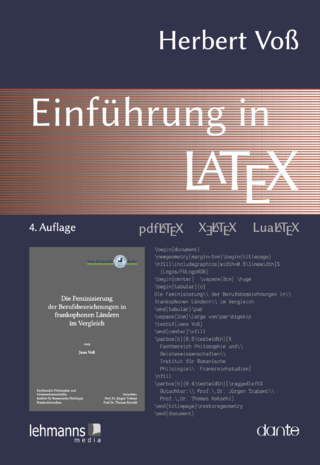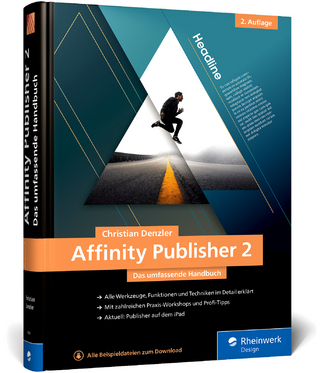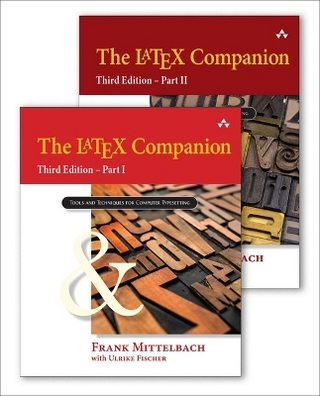
Guide to OCR for Indic Scripts
Springer London Ltd (Verlag)
978-1-4471-2518-1 (ISBN)
Theoriginalmotivationsfordevelopingopticalcharacterrecognitiontechnologies weremodesttoconvertprintedtexton?atphysicalmediatodigitalform,prod- ingmachine-readabledigitalcontent. Bydoingthis,wordsthathadbeeninertand bound to physical material would be brought into the digital realm and thus gain newandpowerfulfunctionalitiesandanalyticalpossibilities. First-generation digital OCR researchers in the 1970s quickly realized that by limiting their ambitions primarily to contemporary documents printed in st- dard font type from the modern Roman alphabet (and of these, mostly English language materials), they were constraining the possibilities for future research andtechnologiesconsiderably. Domainresearchersalsosawthatthetrajectoryof OCR technologies if left unchanged would exclude a large portion of the human record. Digitalconversionofdocumentsandmanuscriptsinotheralphabets,scripts, and cursive styles was of critical importance.
Embedded in non-Roman alp- bet source documents, including ancient manuscripts, papyri scrolls, clay tablets, and other inscribed artifacts was not only a wealth of scholarly information but alsonewopportunitiesandchallengesforadvancingOCR,imagingsciences,and othercomputationalresearchareas. Thelimitingcircumstancesatthetimeincluded the rudimentary capability (and high cost) of computational resources and lack of network-accessible digital content. Since then computational technology has advancedataveryrapidpaceandnetworkinginfrastructurehasproliferated. Over time, thisexponential decrease inthecost of computation, memory, and com- nicationsbandwidthcombinedwiththeexponentialincreaseinInternet-accessible digitalcontenthastransformededucation,scholarship,andresearch. Largenumbers ofresearchers,scholars,andstudentsuseanddependuponInternet-basedcontent andcomputationalresources. Thechaptersinthisbookdescribeacriticallyimportantareaofinvestigation- addressingconversionofIndicscriptintomachine-readableform. Roughestimates haveitthatcurrentlymorethanabillionpeopleuseIndicscripts. Collectively,Indic historic and cultural documents contain a vast richness of human knowledge and experience.
The state-of-the-art research described in this book demonstrates the multiple values associated with these activities. Technically, the problems associated with Indicscriptrecognitionareverydif?cultandwillcontributetoandinformrelated v vi Foreword scriptrecognitionefforts. Theworkalsohasenormousconsequenceforenriching andenablingthestudyofIndicculturalheritagematerialsandthehistoricrecord of its people. This in turn broadens the intellectual context for domain scholars focusingonothersocieties,ancientandmodern. Digital character recognition has brought about another milestone in coll- tivecommunicationbybringinginert,?xed-in-place,textintoaninteractivedi- talrealm. Indoingso,theinformationhasgainedadditionalfunctionalitieswhich expandourabilitiestoconnect,combine,contextualize,share,andcollaboratively pursue knowledge making. High-quality Internet content continues to grow in an explosivefashion. Inthenewglobalcyberenvironment,thefunctionalitiesandapp- cationsofdigitalinformationcontinuetotransformknowledgeintonewundersta- ingsofhumanexperienceandtheworldinwhichwelive.
Thepossibilitiesforthe futurearelimitedonlybyavailableresearchresourcesandcapabilitiesandtheim- inationandcreativityofthosewhousethem. Arlington,Virginia StephenM.
Section: Recognition of Indic scripts.- Building Data Sets for Indian Language OCR Research.- On OCR of Major Indian Scripts: Bangla and Devanagari.- A Complete Machine-Printed Gurmukhi OCR System.- Progress in Gujarati Document Processing and Character Recognition.- Design of a Bilingual Kannada–English OCR.- Recognition of Malayalam Documents.- A Complete OCR System for Tamil Magazine Documents.- Experiments on Urdu Text Recognition.- The BBN Byblos Hindi OCR System.- Generalization of Hindi OCR Using Adaptive Segmentation and Font Files.- Online Handwriting Recognition for Indic Scripts.- Section: Retrieval of Indic documents.- Enhancing Access to Primary Cultural Heritage Materials of India.- Digital Image Enhancement of Indic Historical Manuscripts.- GFG-Based Compression and Retrieval of Document Images in Indian Scripts.- Word Spotting for Indic Documents to Facilitate Retrieval.- Indian Language Information Retrieval.
| Reihe/Serie | Advances in Pattern Recognition |
|---|---|
| Zusatzinfo | 11 Illustrations, color; 150 Illustrations, black and white; XXI, 325 p. 161 illus., 11 illus. in color. |
| Verlagsort | England |
| Sprache | englisch |
| Maße | 155 x 235 mm |
| Themenwelt | Informatik ► Grafik / Design ► Desktop Publishing / Typographie |
| Informatik ► Office Programme ► Outlook | |
| Informatik ► Theorie / Studium ► Künstliche Intelligenz / Robotik | |
| Technik | |
| Schlagworte | Digitale Bibliotheken • Digital Libraries • Document Retrieval • Indic Scripts • OCR • OCR (Optical Character Recognition) • Text Recognition |
| ISBN-10 | 1-4471-2518-5 / 1447125185 |
| ISBN-13 | 978-1-4471-2518-1 / 9781447125181 |
| Zustand | Neuware |
| Haben Sie eine Frage zum Produkt? |
aus dem Bereich


